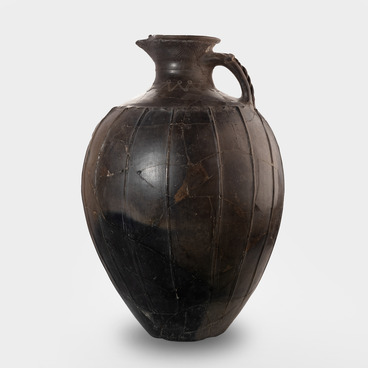The exhibition of the Tanais Archaeological Museum-Reserve features a bronze key from the 2nd century CE.
At that time, these types of keys were used to lock the lids of wooden boxes, which contained valuable possessions of local residents — jewelry and other precious items. Although wooden boxes have not survived to this day, their metal components, such as bolts, various linings, and lock parts, have been preserved and often serve as evidence of their existence. Wealthy merchants who engaged in profitable trade with local nomadic tribes could afford such jewelry boxes. One notable feature of bronze keys is their shape, as they were designed to be worn on a finger. In the absence of pockets in clothing, people carried personal items in bags on their belts or, in the case of keys, on their fingers like rings. This practice ensured that the key always remained within the owner’s sight and reduced the risk of theft.
The key consists of a round ring and a rod with a flat oval cross-section. The bit of the key is perpendicular to the ring. There are various projections on the bit that must align with the holes in the bolt, which is the locking part of the mechanism. The operation of the mechanism that opens or closes the lock depends on these projections fitting into specific slots within the lock.
The bronze key from the 2nd century CE, found in Tanais, is not only a rare and valuable artifact, but also an interesting object for studying ancient technologies. Its shape was designed to be worn on a finger, and various protrusions on the bit ensure proper alignment with the lock mechanism. The combination of aesthetics and functionality make this key a unique example of ancient handicraft, providing opportunities for research in archaeology and the history of the cultural achievements of Tanais.



